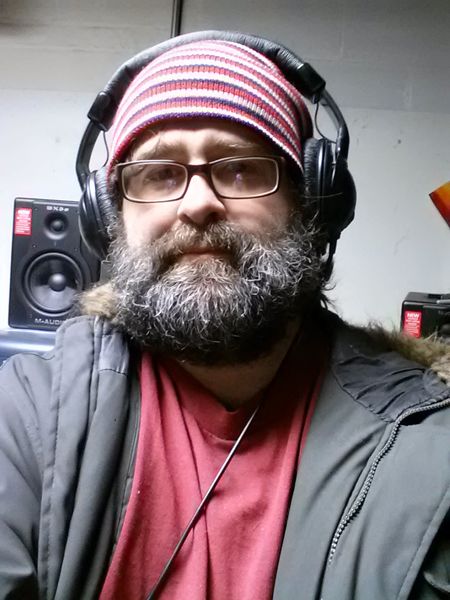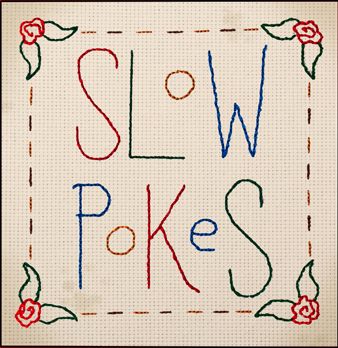Here’s how it used to work for songwriters: you wrote your songs, polished them up as much as possible, maybe made a simple demo tape, then saved up enough hard-earned money to hit the studio and turn what was in your head into a finished product – and you couldn’t possibly make it happen without help. If you were lucky, you’d get some interest, get signed to a record label and get enough advance money to finance the recording of said finished product. But huge shake-ups in the standard-model record industry, the rise of online commerce and the influx of affordable recording gear have gone a long way toward taking the middleman out of producing and selling music. Three local artists (among dozens, certainly) have embraced the DIY ethos and have been able to make their music available to the masses. The beauty of their approach is that none of the three is out there starving for his art. To different degrees, each of these guys is pragmatic, bemused and even ambivalent about his art once it has left the “nest,” so to speak.
Kevin Hambrick, a local indie mainstay for years and leader of The Orange Opera, produces his solo material in his basement.
“I don’t really know, to a good extent, what I’m doing,” Hambrick says, “but I do well enough to get the job done.” Hambrick, who is known for his prolific output and tuneful songcraft, is selling himself short. His material receives consistently positive reviews, and his homegrown approach has resulted in an instantly recognizable sound, one that’s simultaneously classic and contemporary. His latest solo effort, Turtle Wagon, is a perfect example.
Another favorite among locals who appreciate original music is Thunderhawk’s Josh Hall. A transplant from Muncie, Hall came to Fort Wayne and garnered an instant crowd. Word of mouth about the band preceded its arrival, and the discovery by nascent Fort Wayne fans of an already available clutch of brilliant albums didn’t hurt. The project’s hook-heavy tunes run the gamut from driving indie rock to lo-fi pop to alt country, and Hall always puts on energetic, crowd-pleasing live shows. His attitude toward distributing his music might best be described as “sphinx-like.” For instance, when asked about his approach to promotion, he says, “I’ve been trying to keep it real underground over the past few years, almost like you have to know somebody in order to get your hands on a Thunderhawk album. And that somebody is me.”
Perhaps the least (physically, anyway) visible of these three is Warsaw, Indiana’s John Hubner. Whether at the helm of his Goodbyewave or Sunnydaymassacre projects or working under his own handle, Hubner is a nonstop music-production machine who has churned out several impressive albums from his den. Though he doesn’t perform live, Hubner does promote his work. “I have a blog (jhubner73.com), as well as Bandcamp pages for SDM and GBW. All three things have been indispensable in my promotional activities.”
Hubner crystallizes what motivates all three artists and keeps them interested.
“I love the process,” he says. “I love that moment where the melody shines through and everything clicks.”
All three also share another connection: they learned their craft through trial and error, and each of them cut their recording teeth on cassette four-track recorders. Unlike mono or stereo recorders, four-tracks make it possible to record a part then overdub multiple additional parts separately. One person can become an entire band, thanks to this (now-primitive) recorder. Hall remembers saving up for his.
“When I was 13, there was a band from my area called Ween. They were like these local heroes. I had all their albums and realized they recorded everything on a TASCAM four-track,” he said. “So I saved up all my money from birthdays and cutting lawns and bought the exact same four-track. I just figured if two nutjobs could record some stuff in their bedroom and be on MTV, at the very least I could make some cool music on my own in the basement.”
Hambrick started small and worked his way up to a four-track. “I used to just tape songs on a cheap boombox, just record every practice – everything.” Once he obtained a cassette four-track, “I used it for years before I got a digital four-track from my stepdad.” He points to local musician Javier Bayouth, who engineered several of Hambrick’s early efforts, for making a big impact on his approach. “Jav had a big influence on recording and my guitar playing,” he says. “Maybe it’s his sound that wore off on my ears that makes me want to sound like that.”
Inspired by his uncle, a home-recording enthusiast, Hubner got his hands on a four-track and wasted no time diving into recording. “Once I could record my ideas and turn them into actual songs with working parts, all I wanted to do was share them with the world,” he recalls. And, though he, Hambrick and Hall have all moved on to the more flexible and professional-sounding world of digital recording, none of the three has abandoned the approach.
“I still do one-mic recording after all this time,” notes Hambrick. “I want to get things done quick, even though it doesn’t end up working out that way.”
Hall agrees. “I don’t use a four-track now, but I overdub everything one track at a time starting with drums, then guitars, then vocals – exactly the same way I did on a four-track when I was 15. I just have more control in post production.”
Of course, recording one track at a time all by your lonesome means being able to play several instruments. Both Hambrick and Hall took piano lessons when they were young, but all three are self-taught for the most part.
“I play multiple instruments, but I wouldn’t say I play any of them well,” Hall says. In addition to the standard “rock band” instruments, he also adds trumpet and sax to some of his tunes.
Hubner’s Goodbyewave project featured friend Jack Long on drums, but now his solo and Sunnydaymassacre projects are all him.
“Now, I record the guitar to a click track and build the song from there,” he says. “I tend to work quickly, so having to wait for someone else to get their part ‘just right’ is a bit tedious for me.” He admits, however, that “I’d love the opportunity to work with other artists in the studio, as it were.”
Hambrick, who often adorns his songs with everything from squiggly synths to vintage-style accordion parts, usually starts with drums. “I’ve also been using some of the ‘fake’ drums from the digital four-track,” he notes. Self-deprecating to a fault, he calls his method “lazy, cheap recording.”
Hall prefers to record a guide guitar and vocal first. “Then,” he says, “I usually start piling on the drums, then guitars and bass. Then if the song calls for it, I’ll put on brass, keys or what have you. I always do the vocals last.”
It’s no surprise that the Beatles land on all three artists’ inspiration lists. Others run the gamut from classic Black Sabbath (Hall: “I think they recorded their first album in like five hours at some studio one day”) to the Kinks to My Bloody Valentine and newer indie artists. Another name that gets mentioned by all three has nothing to do with making music and everything to do with supporting it: Bob Roets, owner of the local mainstay Wooden Nickel record stores.
“Bob is the local musician’s best friend,” says Hubner. “He’s restless in his pursuit to help basement dwellers like myself get my music out to the public.” All three have benefited from having their material available at Wooden Nickel, and they’ve each appeared in the in-store live performances Roets frequently holds to promote new releases. Hubner points out that “the only Goodbyewave live performance was at the North Anthony Wooden Nickel in 2010.”
Downtown record store Neat Neat Neat, a relative newcomer, began selling and promoting local releases right out of the gate. Hall, Hubner and Hambrick also had kind words for Matt Kelley of local design studio One Lucky Guitar. Says Hall, “Matt has always been a mystical believer in what I was doing.” Kelley hosts and organizes several shows every year, giving the local original music scene a boost.
Now that the internet has made music available from anywhere to anywhere at the click of a mouse, how have these DIY musicians put it to use?
“I promote with Facebook,” says Hambrick. “I’ve also done a couple of (“Peel Sessions-style” national indie site) Daytrotter sessions. That was a really fun experience.” He’s also looking to put several albums and projects out via iTunes later this year, including an as-yet-unreleased album and a collection of unreleased songs recorded during previous projects.
Hubner’s internet distributor of choice is Bandcamp, which lets listeners stream songs and albums as well as purchase them. “I’m pretty much a digital-only kind of DIY musician. Bottom line, it’s the best avenue for me.”
Hall has enjoyed a bit of a detour from Thunderhawk in recent months. “I did a kid’s album for a local clothing company called The Good Ones,” he says. Meanwhile, he says, Thunderhawk’s music can be found on iTunes and Amazon.com. “We’ve been thinking about releasing a Thunderhawk album I’ve been sitting on for a while,” he teases, “but who knows?”
Could these compulsive music makers ever see a time coming when they’d stop producing new songs and albums? It’s an alien thought to Hambrick.
“I couldn’t stop, even if I tried. I can’t imagine ‘stopping.’ I would hope that wouldn’t happen; that would be strange,” he says finally.
Hall muses, “That’s a question I’ve never thought about before. I should probably stop if it isn’t too late already.”
Hubner, though, figures he’s a lifer: “Maybe if I lost my arms and legs, then maybe I’d stop. But then,” he adds, “I could still plink out notes on a piano with a pencil in my mouth. So no, I don’t see myself ever stopping.”
 Submit Your Event
Submit Your Event

